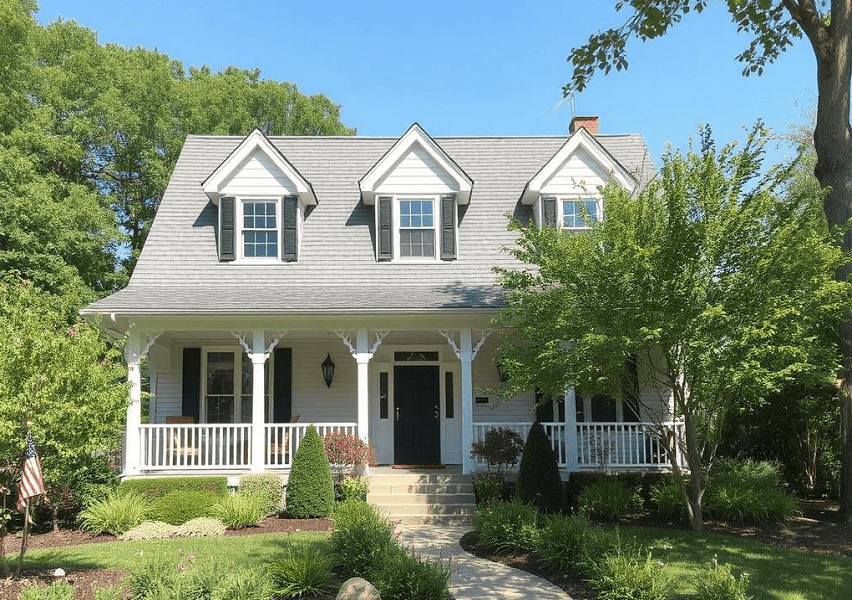
Maintenance and upkeep of a home are two important factors which determine how long the house will last. One needs to take good care of one’s home and need to attend to any repair and renovation concerns without delay.
To increase the longevity of a home, you can focus on regular maintenance, quality repairs, and smart upgrades to protect its structural integrity and functionality. Here are some effective strategies:
- FOUNDATION AND STRUCTURAL CARE
- Inspect for Cracks: Regularly check for foundation cracks, especially near doors and windows. Address any movement or settling issues early.
- Proper Drainage: Ensure water flows away from the foundation by grading the yard, cleaning gutters, and using downspout extensions to prevent water from pooling near the home.
- Repair Damage Promptly: Address any structural issues as soon as they arise, as small cracks or leaks can grow and lead to bigger problems over time.
ROOF AND GUTTER MAINTENANCE
- Inspect the Roof Annually: Check for damaged shingles, leaks, or soft spots. Repair or replace worn areas to prevent water from seeping in and causing damage.
- Clean Gutters Regularly: Remove leaves, dirt, and debris to keep gutters clear and water flowing. Blocked gutters can cause water to back up, potentially leading to roof or foundation issues.
PROTECT AGAINST WATER DAMAGE
- Check for Leaks and Moisture: Inspect plumbing and appliances for leaks. Fix any leaks promptly, as moisture is a leading cause of structural damage and mold.
- Install a Sump Pump: If your home is in an area prone to flooding or has a basement, a sump pump can help prevent water damage.
- Use Quality Waterproofing: Ensure bathrooms, kitchens, and basements are properly waterproofed and ventilated to prevent dampness and mold growth.
REGULAR HVAC MAINTENANCE
- Clean Filters and Ducts: Clean or replace filters every few months and have ducts professionally cleaned as needed to ensure air quality and prevent strain on the system.
- Schedule Annual Inspections: Regularly inspect and maintain HVAC systems to avoid costly breakdowns and improve efficiency.
EXTERIOR UPKEEP AND PROTECTION
- Repaint or Seal Exterior Surfaces: Repainting or sealing protects wood and siding from moisture and pests, preventing decay.
- Maintain Windows and Doors: Seal or caulk around windows and doors to prevent drafts and moisture infiltration.
- Power Wash Annually: Cleaning exterior surfaces like siding, decks, and driveways removes mold, mildew, and debris that can cause gradual wear.
ELECTRICAL AND PLUMBING SYSTEMS
- Check Wiring: Regularly inspect for any frayed or damaged wiring and ensure outlets and breakers are functioning correctly. Upgrading older wiring can prevent electrical fires.
- Flush the Water Heater: Drain your water heater annually to remove sediment build-up, extending its lifespan and improving efficiency.
- Insulate Pipes: Especially in colder climates, insulate exposed pipes to prevent freezing and bursting during winter months.
PEST PREVENTION
- Seal Entry Points: Block gaps around windows, doors, and in the foundation to keep pests out.
- Regular Inspections: Check for signs of termites, rodents, and other pests, and treat infestations quickly to avoid structural damage.
SUSTAINABLE LANDSCAPING
- Choose Low-Maintenance Plants: Native plants require less water and care, and they’re often more resistant to local pests and weather conditions.
- Avoid Large Trees Near the Foundation: Trees with expansive roots can damage foundations and drainage systems, so keep them at a safe distance from the home.
ENERGY EFFICIENCY AND MODERN UPGRADES
- Install Energy-Efficient Fixtures: LED lighting, smart thermostats, and modern appliances can reduce energy usage, extending the lifespan of your systems.
- Add Insulation: Proper insulation helps regulate temperature, reduces strain on HVAC systems, and prevents issues related to moisture buildup.
CREATE A MAINTENANCE SCHEDULE
- Seasonal Checklists: Create lists for spring, summer, fall, and winter tasks to stay on top of needed repairs and maintenance.
- Keep a Record of Repairs and Upgrades: Documenting repairs, replacements, and improvements helps you stay organized and plan for future maintenance.
Conclusion: Maintaining a new home involves a careful implementation of the steps as mentioned above and taking proper care of the home leads of longevity of the home.


